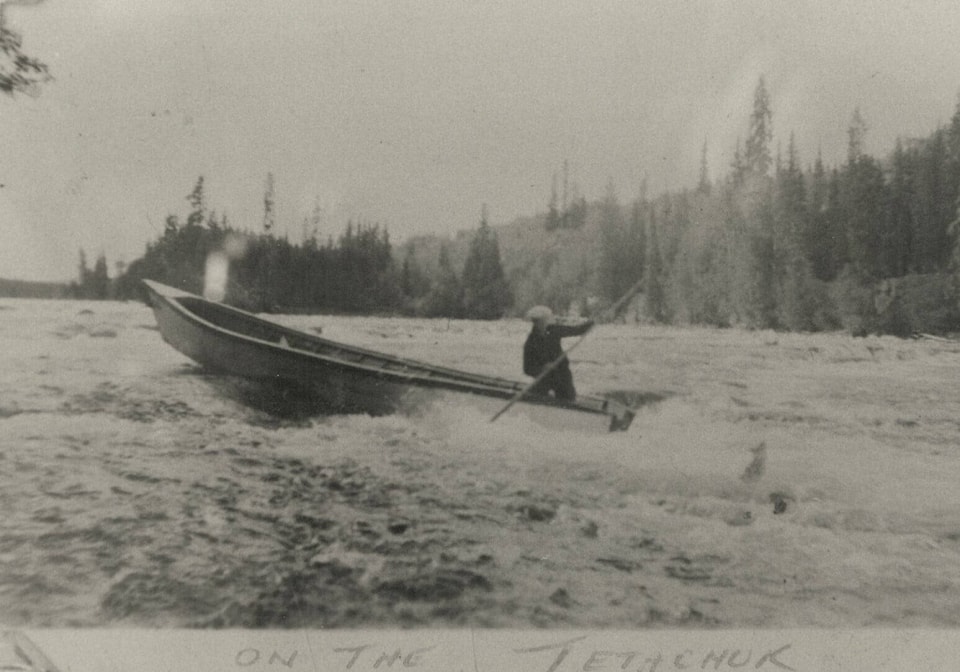Contributed by Doug Van Tine
Big Eutsuk Lake, to the west, is still known for its outstanding beauty, and is the only lake in the chain that survived the devastating flood of the early 1950s.
About one-third of the way up the lake, in the south, is a huge bay with two islands that are named after Lord and Lady Tweedsmuir. A few miles further south along this bay, you come to Pondosy River. The river is less than a mile long and comes from Pondosy Lake, nestled in the mountains. The glacial water turns the lake water pale green; the lake is about three miles long and ends at the base of the Coast Range Mountains.
About two-thirds of the way up Eutsuk Lake, on the north, is St. Thomas Bay.
This is where the portage was first built, by the early settlers, to gain access to Big Eutsuk Lake. If you continue west about eight miles, on the west end of the lake, the Coast Range Mountains rise from the lake with stunning beauty. On the right-hand shore is Surel Falls, which provides good fly-fishing. There are glaciers that come down to the lakeshore for most of the year, where you can cool your fish, or your beer. There are now three lodges on Big Eutsuk Lake, one belonging to Jim Van Tine鈥檚 family. Our whole family celebrated our 80-year anniversary on Big Eutsuk Lake, at the camp.
From St. Thomas Bay, the portage used to be one and one-quarter miles long, downhill into Whitesail Lake, which ended up being about the middle of the lake on the south side. To the west, 12 miles, was the head of Whitesail Lake鈥gain, with stunning beauty, nestled in the Coast Range Mountains. Falls Creek enters on the southwest end of the lake where we used to catch rainbow trout up to six pounds on a fly rod, in the creek.
Travel easterly, about 25 miles, along Whitesail Lake surrounded by giant trees and a trapper鈥檚 paradise. Whitesail River was quite shallow but all navigable and was a huge spawning river for Kokanee. The Kokanee spawned in September, and the river turned red from the colour of the thousands of fish spawning there. Early settlers netted boatloads to feed the mink and fox farms.



